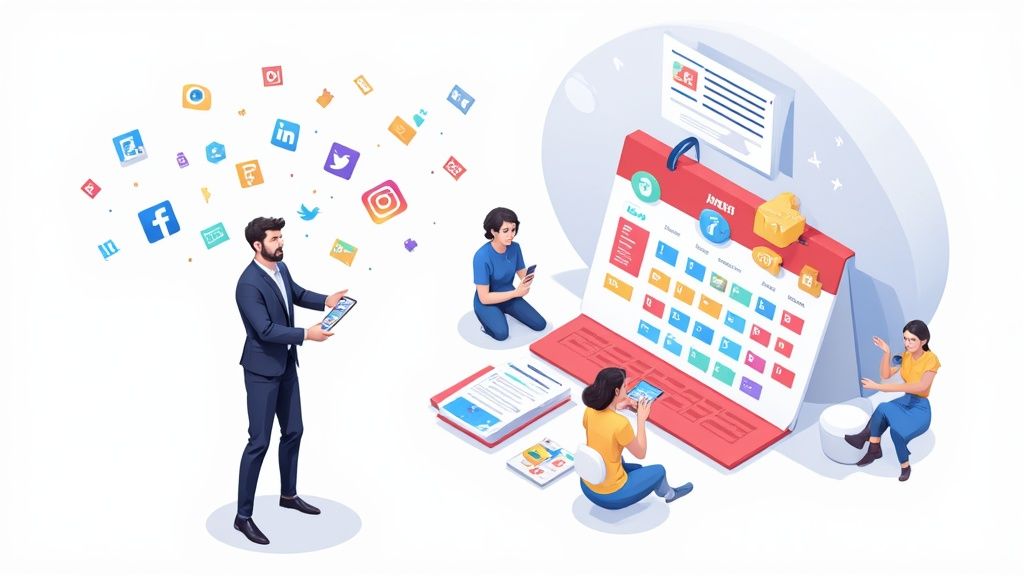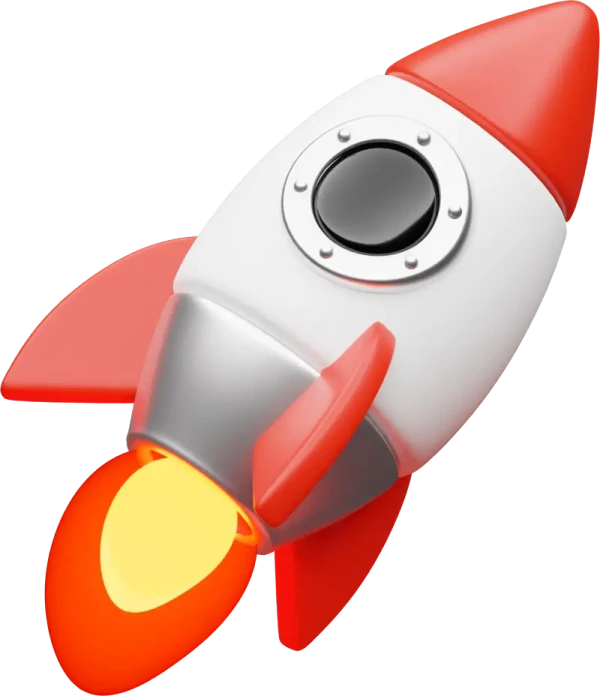Think of social media event marketing as the lifeblood of modern event promotion. It’s how you build awareness, drive registrations, and keep the conversation going with attendees before, during, and long after the event wraps up. It has completely replaced most traditional outreach, offering a far more dynamic, measurable, and community-driven way to fill seats.
Why Social Media Is Your Event’s Most Powerful Tool
In my time as Social Media Manager for Add to Calendar PRO, I’ve had a front-row seat to countless events going from a simple idea to a sold-out success. The one constant? A killer social media strategy. It's not just another promotional channel anymore; it’s the central hub where your event’s community is born and thrives.
This holds true whether your event is virtual, in-person, or a hybrid of the two. Social platforms give you a direct, unfiltered line to your ideal audience.
The real magic is that social media does so much more than just announce what's happening. You can create genuine buzz, share behind-the-scenes sneak peeks, put your speakers in the spotlight, and spark conversations that turn casual scrollers into enthusiastic attendees. This kind of engagement is what transforms passive interest into active participation.
The Undeniable Shift to Social and Mobile
The marketing world puts its money where the audience is. Projections show global spending on social media advertising is on track to hit a staggering $276.7 billion in 2025. Even more telling is that this figure is expected to keep growing by about 10% annually.
What's driving this? Mobile. By 2030, a massive 83% of this ad spend is projected to come from mobile devices, hammering home the need for a mobile-first event strategy.
The heart of modern event marketing isn't just about being online. It's about being present and interactive right where your audience lives - on their phones and in their social feeds. Every single touchpoint, from the first ad they see to the moment they click "register," has to be flawless on mobile.
Choosing the Right Platforms
Not every social platform is the right fit for every event. Real success comes from picking the channels where your specific audience actually hangs out and is most engaged. The core principles of online promotion are pretty universal, whether you're marketing a corporate webinar or a university open house. If you're looking for a deeper dive into these broader strategies, this complete guide to higher education digital marketing is an excellent resource.
Choosing your platforms wisely is the first critical step. This isn't about being everywhere; it's about being in the right places.
Choosing the Right Social Platform for Your Event
To help you get started, here's a quick look at the top social media platforms and what they do best for different kinds of events.
| Platform | Best For | Primary Audience | Key Feature for Events |
|---|---|---|---|
| Community building, broad-reach announcements, ticket sales. Great for local events, festivals, and large conferences. | Wide demographic, especially 25-55+. | Facebook Events for easy RSVPs and reminders; Groups for pre-event community building. | |
| Visually-driven promotion, behind-the-scenes content, influencer marketing. Ideal for creative, lifestyle, and brand-focused events. | Primarily 18-34. Skews slightly female. | Stories with countdown stickers; Reels for dynamic video teasers; Live for Q&As. | |
| Professional networking, B2B events, industry conferences, and webinars. | Professionals, B2B decision-makers, and job seekers. | LinkedIn Events for professional promotion; targeted ads based on job title/industry. | |
| X (Twitter) | Real-time updates, live-tweeting during the event, engaging with speakers and sponsors. Perfect for tech, news, and media events. | Tech-savvy users, journalists, and industry leaders. Strong in the 25-49 range. | Hashtags for tracking conversations; Spaces for live audio discussions. |
| TikTok | Generating viral buzz, user-generated content challenges, reaching a younger audience. Best for concerts, festivals, and consumer-facing events. | Heavily skews Gen Z and younger millennials. | Short-form video trends; Duets and Stitches for user engagement. |
This chart shows how other event marketers are currently prioritizing the major platforms.
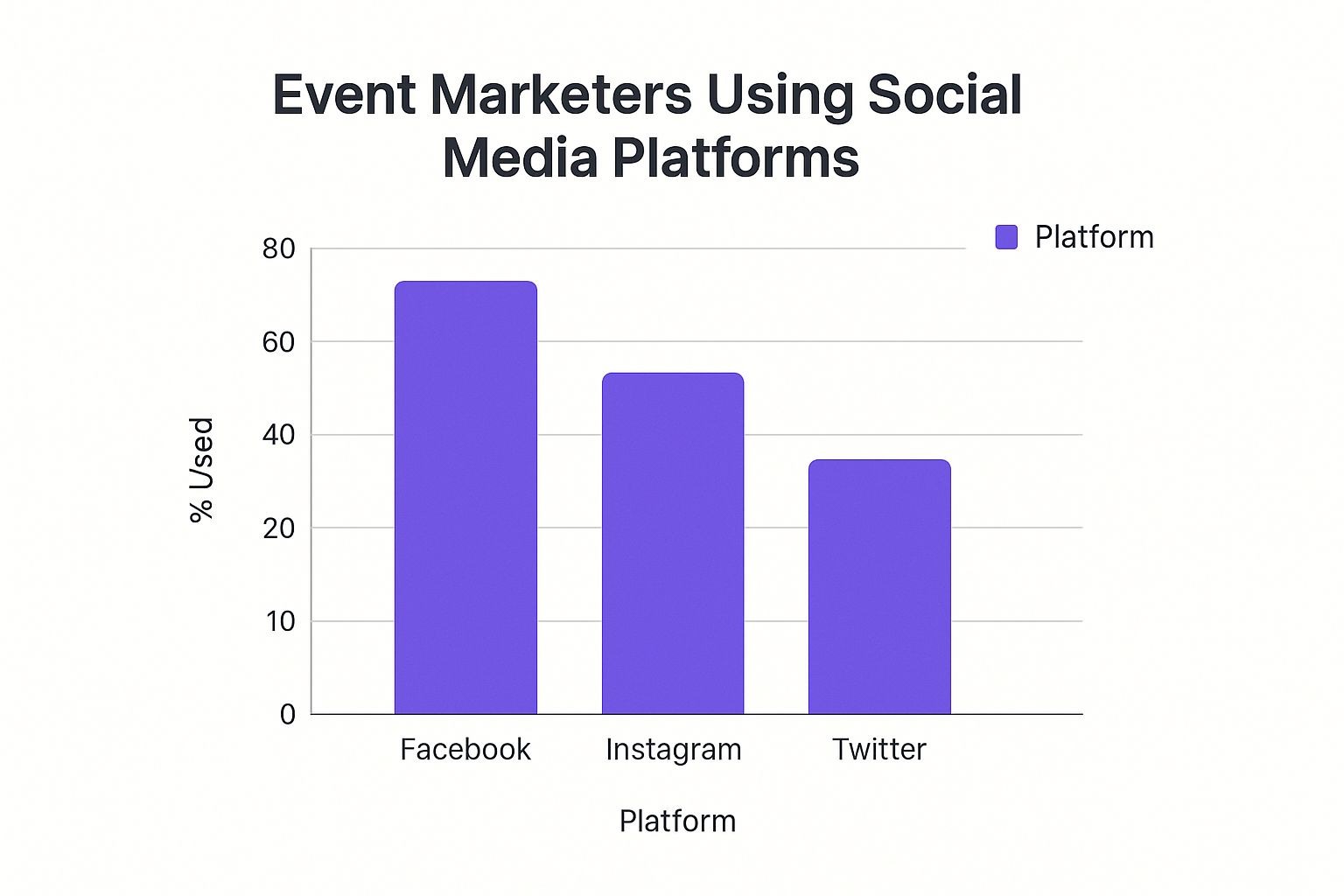
While the data clearly shows Facebook's continued dominance, a smart strategy often involves a strong presence on platforms like Instagram and LinkedIn to hit different demographics. The key is to tailor your approach, using the unique strengths of each platform to connect with potential attendees.
Ultimately, a well-integrated strategy creates a smooth and easy journey for your audience - from the first post they see to the moment they use a tool like our service, Add to Calendar PRO, to save your event to their calendar.
Crafting Your Pre-Event Promotion Strategy
A great event doesn't just happen on the day. The real work - and the real magic - starts weeks or even months before, with your pre-event promotion. This is where you build the momentum that turns casual scrollers into registered, excited attendees. It's about telling a story that makes people feel they have to be there.
This isn't about just blasting out the date and time. You need a plan that feels both strategic and genuine. It starts with getting laser-focused on your ideal attendee, figuring out where they hang out online, and then creating content that actually connects with them.
Defining Your Audience and Choosing Platforms
Before you write a single post, you need to know exactly who you're talking to. Is this a highly technical webinar for B2B professionals? Or maybe a creative workshop for freelance designers? Your answer changes everything - the platforms you choose, the tone you use, and the content you create.
Using social media for events is pretty much standard practice now. In fact, 58% of marketers rely on it throughout the entire event lifecycle to keep people engaged. While Facebook is still the go-to for 52% of event planners because of its sheer size, don't sleep on other platforms. LinkedIn (26%), X/Twitter (13%), and Instagram (6%) can be incredibly powerful when matched to the right audience and event type.
Once you’ve nailed down your who and where, it's time to build your content calendar. Think of this less as a schedule and more as your strategic roadmap for creating a real buzz.
Building Your Content Calendar
A solid content calendar is your key to staying consistent without boring your audience. The goal is to mix things up. This keeps people interested and prevents them from tuning out after seeing the same "Register Now!" post for the tenth time. As you build your plan, getting good at platform-specific tactics, like learning how to schedule posts on TikTok, can make you way more efficient and expand your reach.
Here are a few content ideas that should always be in your pre-event mix:
- Behind-the-Scenes Teasers: Show off the venue being set up, give a sneak peek of the swag bags, or post a quick clip from a speaker rehearsal. It creates an insider feel and a bit of FOMO.
- Speaker or Performer Spotlights: Don't just list your speakers. Dedicate posts to them. Share a powerful quote, their bio, or even a short video of them talking about their session.
- Interactive Content: Get people involved! Run polls, fun quizzes, or "ask me anything" (AMA) sessions. Ask them what they're most excited about. It's a simple way to start a conversation.
- Countdown Timers: Instagram and Facebook Stories are perfect for this. The countdown creates a natural sense of urgency - a simple but surprisingly effective visual cue.
The best pre-event campaigns make the audience feel like they're part of the journey. You're not just selling tickets; you're selling an experience and the community that comes with it.
Designing Eye-Catching Visuals
Let's be real: a crowded social feed is a battle for attention. Your visuals are your best weapon. They need to be bold, on-brand, and designed to work on the specific platform you're using.
Every single graphic or video should clearly communicate the essentials: the event name, date, and a strong call-to-action (CTA). Stick to consistent branding - your colors, fonts, and logo - to build that instant recognition. Short, punchy video clips, like highlight reels from last year or simple animated graphics, are absolute gold for stopping the scroll.
Converting Interest into Attendance
Okay, so you've built all this interest. Now for the most important part: turning that buzz into actual, confirmed attendees. You have to make the registration process ridiculously easy. Your CTA needs to be crystal clear and frictionless.
This is exactly where a tool like our service, Add to Calendar PRO, can be a total game-changer.
By putting a simple "Add to Calendar" button right in your social posts, on your event landing page, or in your confirmation emails, you remove any and all effort for someone to commit. It's one click. That's it. Suddenly, your event is sitting right there on their personal calendar - a constant reminder that slashes no-shows and locks in their intention to be there. For more tips on getting the word out, check out our guide on effective event promotion ideas. When you combine great content with a dead-simple call-to-action, you've built a powerful engine to drive registrations.
Driving Live Engagement During Your Event
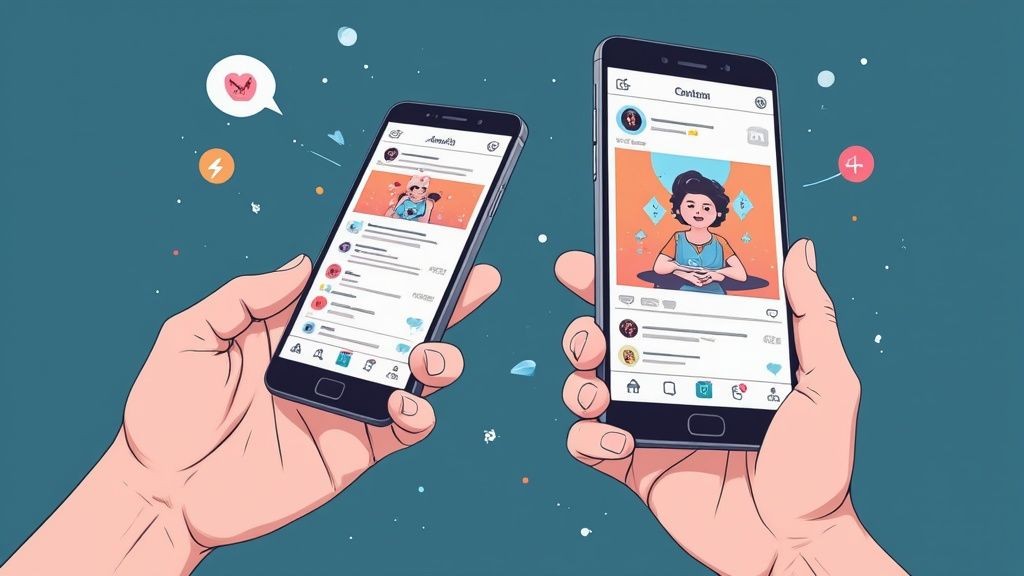
Once your event kicks off, your social media game plan has to pivot. All that pre-event hype was about getting people in the door (or on the stream). Now, it’s all about participation.
The real magic happens when you turn your event into an interactive experience. You want to make everyone - whether they’re in the room or watching online - feel like they're a part of the action, not just a passive observer. Your social channels are now the live pulse of the event, the place for real-time chatter, feedback, and shared moments that amplify your reach far beyond the venue walls.
Make Your Hashtag the Star of the Show
That unique hashtag you picked out during the planning phase? It’s time for its moment in the spotlight. Think of it as the digital glue holding every conversation, photo, and "aha!" moment together. To get people using it, you need to put it everywhere.
Plaster it on presentation slides, on physical banners, at the check-in desk, and even on name badges. Get your hosts and speakers to give it a shout-out from the stage. Repetition is key. The more people see it, the more they'll use it.
A great hashtag acts as a live, user-generated archive of your event. It allows you to track the conversation, identify key moments, and see your event through the eyes of your attendees.
For instance, a conference like #InnovateSummit24 could get a ton of mileage by asking attendees to post their key takeaways. This isn't just great for engagement; it creates a live feed showcasing the value of your event as it happens.
Turn Attendees into Content Creators
Let's be honest, the most believable and compelling promotion comes straight from your attendees. Encouraging user-generated content (UGC) is one of the most powerful moves you can make during a live event. People trust posts from their peers way more than they trust slick, branded content.
Here are a few simple ways to get the ball rolling:
- Set Up Photo Ops: A branded photo booth or a cool, Instagrammable backdrop is a classic for a reason. It practically begs people to snap a pic and share it.
- Run a Live Contest: Announce a contest for the "best tweet" or "most creative Instagram post" using your event hashtag. The prize doesn't have to be huge - company swag or a ticket to next year's event works wonders.
- Feature UGC Prominently: Nothing encourages people to post like a little public recognition. Showcase the best attendee photos and posts on a social media wall or on the main screens during breaks.
This strategy does more than just spark online conversation. It also stocks your content library with authentic material you can use for marketing your next event.
Engage Your Online and In-Person Audiences
Your social media plan needs to embrace everyone, not just the people physically in the room. This is non-negotiable for virtual and hybrid events, where the online audience can easily feel left out.
To bridge that gap, try a few of these tactics:
- Live Stream Key Moments: You don’t need to stream the whole thing. Pop on Instagram Live or LinkedIn Live for the keynote, a hot-topic panel, or any big announcements. It gives your wider audience a taste of the action.
- Host Live Polls and Q&As: Use platforms like X (formerly Twitter) or Instagram Stories to run polls related to session topics. Make sure you dedicate a slice of your Q&A time to questions coming in from your online audience via the hashtag.
- Appoint a Community Manager: Have one person on your team whose only job is to hang out online. They should be replying to comments, answering questions, and making remote attendees feel like you see and value them.
When your social media is woven into the fabric of your live programming, you create a single, unified experience. This approach also pairs perfectly with other communication channels. For more on that, our article on leveraging email marketing for events has some great tips that sync up nicely with these social strategies. The goal is simple: make every single person feel like they have a front-row seat.
Extending Your Event's Impact After the Curtains Close
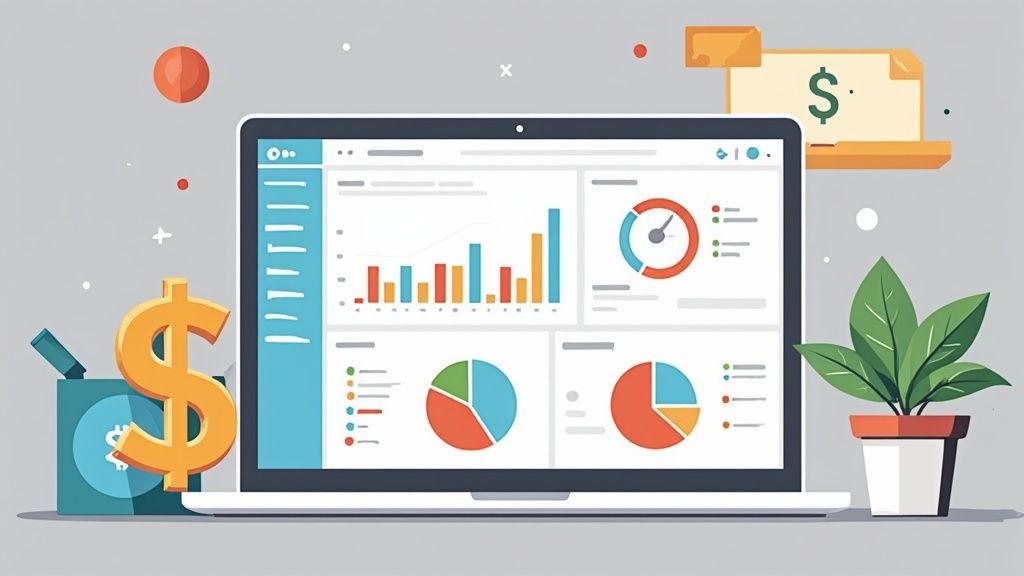
The final session has wrapped up, the lights are on, but your work on social media is far from done. In fact, this is where the real magic happens. The post-event phase is your chance to solidify the event's legacy, nurture the community you just built, and start planting seeds for your next big thing.
Your main job now is to keep that incredible energy going. You want to remind attendees of the value they got, give non-attendees a serious case of FOMO (fear of missing out), and turn those one-time participants into loyal fans.
Keep the Conversation Going
The first 24-48 hours after your event are gold. The excitement is still buzzing, and people are eager to share their thoughts. You have to jump on this window of opportunity.
Start with a simple but powerful "Thank You" post. This isn't just about being polite; it's a strategic move. Tag your speakers, sponsors, and partners to give them a shout-out, which also massively extends your post's reach. Ask attendees to drop their favorite moments in the comments using your event hashtag.
This is also the perfect time to showcase all that amazing user-generated content (UGC). When you feature photos and posts from your attendees, you make them feel seen and appreciated. Suddenly, they’re not just attendees; they’re authentic advocates who will hype up your future events.
Repurpose and Distribute Event Content
Think of all the content your event produced - it's a goldmine. Now it’s time to slice it, dice it, and share it strategically to stretch its value for weeks or even months. Don't let those keynote recordings or panel discussions gather digital dust on a server somewhere.
Your post-event content isn't just a recap; it's a powerful marketing asset. Every piece you share - from a slick quote graphic to a full session video - is a compelling reason for someone to be at your next event.
By repurposing your content, you keep providing value long after the event is over. You're showing everyone who couldn't make it the incredible quality of your programming, cementing your brand's authority and keeping your event top-of-mind.
Post-Event Content Repurposing Ideas
It can be tough to visualize how one piece of content can become many. Here’s a practical table showing how you can transform your original event materials into a steady stream of social media assets.
| Original Content | Repurposed Format 1 | Repurposed Format 2 | Platform |
|---|---|---|---|
| Full Keynote Recording | A 60-second highlight reel with key takeaways. | A series of striking quote graphics for Instagram/LinkedIn. | YouTube, LinkedIn, Instagram, TikTok |
| Panel Discussion | Short video clips of each panelist answering a key question. | A carousel post summarizing the main debate points. | LinkedIn, X (Twitter), Facebook |
| Audience Q&A Session | A blog post summarizing the most frequently asked questions. | "Did you know?" style posts answering one question at a time. | Blog, Facebook, Instagram |
| Attendee Photos | A "Faces of the Event" photo gallery album on Facebook. | An Instagram Story series shouting out the best UGC posts. | Facebook, Instagram |
By planning this out, you can create a content calendar that keeps your event's momentum going for weeks, providing continuous value and promotion.
Gather Feedback and Testimonials
While the experience is still fresh, ask your attendees for their honest feedback. A quick poll on Instagram Stories or a link to a short survey can give you invaluable data on what they loved and where you can improve next time.
At the same time, keep an eye on social media for glowing comments and testimonials. When you spot one, reach out and ask for permission to use it in your future marketing. An authentic quote from a happy customer is often more powerful than any ad copy you could ever write.
Finally, as you start dropping hints about what's next, make sure your entire process is smooth. For a great refresher on nailing the sign-up flow, check out our guide on event registration best practices. When you master the post-show phase, you create a powerful feedback loop that guarantees each event you host is even better than the last.
Measuring What Matters for Future Success
Once the confetti settles and the event buzz quiets down, the real work begins. How do you actually know if all that time and money you poured into social media paid off? This is where we shift from doing the work to learning from it - using hard data to prove your value and get even sharper next time.
As a social media manager, I can tell you this is what separates the good marketers from the great ones. It's about pushing past the easy-to-see numbers, like likes and followers, and digging into the metrics that genuinely move the needle on your goals.
Beyond Vanity Metrics: What to Actually Track
Sure, your campaign got a ton of engagement, and that’s great. But what happened after the click? To really understand your event's performance, you have to connect your social media activity to tangible business outcomes.
Here are the core metrics to zero in on:
- Registrations or Ticket Sales: This is the big one. You need to know exactly how many sign-ups came directly from your social channels. The best way to do this is with UTM parameters in every single link you share.
- Cost Per Acquisition (CPA): How much did it cost to get one person to register? Just divide your total ad spend on a platform by the number of registrations from that same platform. This tells you which channels are giving you the most bang for your buck.
- Engagement Rate: Don't just count likes. Calculate your real engagement rate (likes + comments + shares ÷ followers) to see how compelling your content truly was. A high rate means your message didn't just appear on a screen; it actually resonated.
- Reach and Impressions: While not the ultimate goal, these metrics are still important. They show how far and wide your message traveled. Did you break out of your bubble and reach new audiences?
The most powerful data tells a story. It's not just about reporting that you got 1,000 clicks from LinkedIn. It's about explaining that those clicks led to 75 high-quality registrations at a CPA that was 20% lower than any other channel, proving its value for future B2B events.
Building Your Performance Report
To get a clear picture, you'll need to pull information from a few different places. Your primary tools will be the native analytics dashboards inside each social media platform, like Facebook Ads Manager or LinkedIn Campaign Manager.
These platforms offer a granular look at ad performance, audience demographics, and what happened with every single post. This is your ground zero for data collection.
But don't stop there. Using a tool like Google Analytics 4 (GA4) on your event landing page is non-negotiable. By setting up conversion goals, you can track the entire user journey - from the moment someone clicks a social media link to the second they hit "submit" on your registration form - and attribute that success back to the source. And when it comes to our service, the Add to Calendar PRO dashboard gives you another powerful layer of insight, showing how many people added your event to their personal calendars. That's a strong signal of genuine intent to show up.
Attracting the Right Audience for Next Time
One of the trickiest parts of event marketing is getting the right people in the room (virtual or otherwise). In fact, a whopping 21% of event professionals say that attracting the right attendees is a top concern for 2025. This is precisely where analyzing your data pays off.
Dive into the demographics of who actually registered. Did your LinkedIn campaign bring in the senior-level managers you were hoping for? Or did your Instagram ads attract a younger, more entry-level crowd?
The smartest event marketing strategies are all about personalization and retention, and social media is the engine that powers both. Data shows that 71% of event professionals use events for both customer acquisition and retention. More importantly, those who focus on retention see a 13% higher chance of significant year-over-year growth. By analyzing who engaged and attended, you can fine-tune your targeting for future events to perfectly align with these goals. You can find more insights on how event strategies are evolving in these event marketing statistics.
This kind of analysis lets you reallocate your budget and creative energy with confidence. If one platform delivered high-quality leads at a low cost, you know to double down on it next time. If another brought in a lot of people who weren't a good fit, you can adjust your targeting or messaging. This cycle of performance, measurement, and refinement is the absolute core of successful, data-driven social media event marketing.
Common Social Media Event Marketing Questions
As you get deeper into planning your social media marketing, a few practical questions will inevitably pop up. Having managed campaigns for just about every type of event imaginable, I see the same thoughtful concerns surface time and again. Let's dig into the most common ones.
Think of this less as a rigid rulebook and more as a set of guiding principles. Every event has its own quirks, but the challenges often rhyme.
How Far in Advance Should I Start Promoting My Event on Social Media?
This is the classic question, and the honest-to-goodness answer is: it depends entirely on the scale of your event. There’s no magic number, but I've developed a reliable timeline that works for most situations.
For major events - think big conferences, industry trade shows, or anything with a hefty ticket price - you need a much longer runway. I always recommend starting your promotion 6-8 weeks out. This timeframe gives you the breathing room you need to:
- Build Awareness: Start with "Save the Date" posts and content that builds a general vibe around the event's theme.
- Layer Your Content: You can then roll out your promotions in strategic phases. Think early bird ticket announcements, speaker reveals, deep dives into the agenda, and sponsor spotlights.
- Create Urgency: A longer timeline allows for multiple nudges, like "early bird pricing ends this week!" or the final "last chance for tickets" push.
On the other hand, for smaller events like a free webinar, a local meetup, or a virtual workshop, a shorter, more intense promotional blitz is far more effective. I’ve consistently found that 3-4 weeks is the sweet spot. It’s just long enough to generate serious buzz without giving your audience so much notice that they completely forget about it.
What's the Best Way to Handle Negative Comments During a Live Event?
Ah, the social media manager's nightmare: a stream of negative comments derailing the vibe during your live event. The absolute key is to have a plan and execute it without panic. Whatever you do, never ignore them. Silence makes a small fire look like an inferno.
Your response needs to be immediate, professional, and transparent.
- For Technical Glitches: If someone points out a choppy audio stream or a broken link, acknowledge it publicly. A simple, "Thanks for the heads-up! Our tech team is on it and we'll post an update shortly," shows you're on top of it.
- For General Complaints: If the comment is more subjective, maybe about a session topic or a long queue, respond with empathy. Try something like, "I'm so sorry to hear you're having a frustrating experience. Could you send us a DM with more details so we can help sort this out?" This validates their feelings while moving the nitty-gritty to a private channel.
How you handle public criticism says more about your brand than a hundred positive posts. A calm, helpful, and transparent response can turn a potential crisis into a demonstration of excellent customer service.
How Do I Encourage Attendees to Share Content Using Our Hashtag?
Getting people to actually use your official hashtag comes down to making it easy, visible, and fun. You can't just slap a hashtag on a graphic and hope for the best; you have to actively nurture it.
First, make your hashtag impossible to miss. Plaster it on screens between sessions, on your event website, in email reminders, and on any physical signage. Make it ubiquitous.
Next, give them a real reason to post. Running a contest for the "best post" or the "most insightful tweet" that uses the hashtag is a fantastic motivator. People love a little friendly competition.
Finally, lead by example. Your own team, speakers, and sponsors should be actively posting with the hashtag from the get-go. When you feature user-generated content on a social wall or give it a shout-out from the stage, it creates a powerful snowball effect that encourages others to join in.
Is It Worth Paying for Social Media Ads for My Event?
In a word: absolutely. The glory days of massive organic reach on platforms like Facebook and Instagram are long gone. While building an organic community is crucial for engagement, relying on it alone to fill seats is a gamble you probably can't afford to take.
Paid social media advertising is one of the most powerful tools in your entire event marketing toolkit. It’s what lets you break out of your bubble and reach your exact ideal attendee with surgical precision. You can target people based on:
- Demographics: Age, location, language.
- Interests: Pages they like, topics they follow, brands they engage with.
- Professional Details: Job titles, industries, and company size (especially powerful on LinkedIn).
- Behaviors: Past event attendance or even online purchasing habits.
This level of detailed targeting ensures your marketing dollars are spent reaching people who are genuinely likely to be interested, driving high-quality registrations and giving you the best possible return on your investment.
Frequently Asked Questions
Here's a quick-glance table to answer some other common questions that come up when planning event promotions.
| Question | Quick Answer |
|---|---|
| Which social media platform is best for event marketing? | It depends on your audience. LinkedIn is king for B2B events and conferences. Instagram and Facebook are great for B2C, lifestyle, and community events. TikTok is fantastic for creating viral buzz with a younger demographic. |
| Should I post the same content on all platforms? | No, always adapt your content. A professional announcement on LinkedIn should be a visually engaging Reel on Instagram and a quick, fun video on TikTok. Tailor the message and format to fit what works best on each platform. |
| How do I measure the success of my social media campaign? | Track key metrics like reach, engagement rate, click-throughs on your registration link, and - most importantly - ticket sales or sign-ups attributed to each platform. Use UTM parameters to track sources accurately. |
| What's a good budget for social media ads for an event? | Start small and scale up. There's no magic number, but a good starting point is to allocate 10-20% of your total marketing budget to social ads. Monitor performance closely and reallocate funds to the channels that deliver the best ROI. |
These guidelines provide a solid foundation, but the best teacher is experience. Don't be afraid to test, learn, and adapt your strategy for each unique event.
At Add to Calendar PRO, we're obsessed with turning social media interest into actual attendance. A seamless experience is the key. Our goal is to bridge that critical gap between the buzz you create and a confirmed spot on your attendee's schedule. By making it effortless for someone to save your event, you dramatically boost their commitment and ensure all your hard work pays off.
